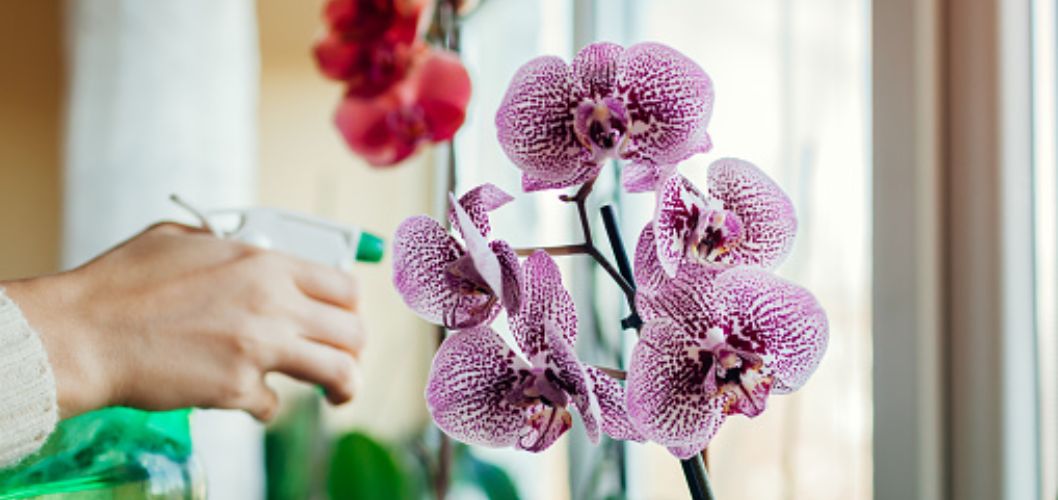Orchids are exquisite and elegant flowering plants that have captivated gardeners and flower enthusiasts for centuries. With their vibrant colors and unique shapes, orchids make a stunning addition to any home or garden. However, many people shy away from growing orchids due to their perceived complexity. In reality, orchids can be successfully cultivated and cared for with a basic understanding of their requirements. This article aims to provide a comprehensive guide on how to grow and care for orchids, enabling both novice and experienced gardeners to enjoy the beauty of these fascinating plants.
How to care for orchids
Choosing the Right Orchid
Before embarking on your orchid-growing journey, it’s crucial to select the right orchid species for your specific environment. Orchids come in a wide array of varieties, each with its own unique set of requirements. Consider factors such as light, temperature, humidity, and space constraints when choosing an orchid. Some popular beginner-friendly orchid species include Phalaenopsis (moth orchids), Paphiopedilum (slipper orchids), and Dendrobium.
Orchid Light Requirements
Light is a vital factor in orchid growth. Most orchids thrive in bright, indirect light. Place your orchids near a window with filtered sunlight or use sheer curtains to diffuse direct sunlight. Inadequate light can lead to weak growth and lack of blooms, while excessive light can cause leaf scorching. Orchids with thick, leathery leaves can tolerate higher light levels, while those with thin leaves require more shade.
Orchid Temperature and Humidity
Orchids are sensitive to temperature and humidity fluctuations. Generally, orchids prefer temperatures between 60-80°F (15-27°C) during the day and a slight drop at night. However, specific orchid species may have different temperature preferences, so it’s important to research and cater to their individual needs. Maintaining proper humidity levels is also crucial for orchids. Most orchids prefer humidity levels around 50-70%. To increase humidity, you can use a humidifier, place a tray with water near the orchids, or group them together.
Orchid Watering and Fertilizing
Proper watering is essential for healthy orchids. Orchids typically require less water than other houseplants. It’s important to find the right balance between underwatering and overwatering. The frequency of watering will depend on factors like temperature, humidity, potting medium, and orchid species. As a general rule, it’s better to be underwater than overwater orchids. Water your orchids thoroughly, allowing the water to drain out completely.
Fertilizing orchids is also crucial for their overall health and blooming. Use a balanced orchid fertilizer and follow the manufacturer’s instructions for application rates. During the active growing season, fertilize your orchids every two to four weeks. Reduce or stop fertilizing during the dormant period.
Prune orchid stems once they finish flowering
Pruning orchid stems after flowering is an important step in maintaining the health and appearance of your orchid. By removing spent flower spikes, you encourage the plant to redirect its energy towards new growth and future blooms. Here are some guidelines for pruning orchid stems:
Timing
Wait until the flower spike has completely finished blooming and starts to wither and turn brown before pruning. Orchids typically have a flowering cycle that lasts several weeks to several months, depending on the species. Once all the flowers have wilted and fallen off, it’s a good indication that it’s time to prune the stem.
Sterilize Your Tools
Before you begin pruning, ensure that your pruning shears or scissors are clean and sterilized. This helps prevent the spread of diseases or pathogens. You can sterilize your tools by wiping them with rubbing alcohol or using a sterilizing solution.
Identify the Node
Examine the flower spike and look for nodes along the stem. Nodes are small, swollen areas where new flower spikes or branches may emerge. They are often located just above where the flowers were attached. It’s essential to identify these nodes before pruning, as this is where new growth will originate.
Cutting the Stem
Using your sterilized tools, make a clean cut just above the identified node. The goal is to remove the spent portion of the stem while leaving enough intact for potential new growth. Make the cut at a slight angle to allow water to drain off and prevent moisture buildup that can lead to rot.

Care after Pruning
Once you have pruned the stem, provide proper care to encourage new growth and future blooms:
- Maintain Regular Orchid Care: Continue to provide the orchid with appropriate light, temperature, humidity, and watering conditions. Remember that different orchid species have varying care requirements, so research the specific needs of your orchid.
- Fertilize Appropriately: Resume regular fertilization according to the recommended schedule for your orchid species. Use a balanced orchid fertilizer to provide essential nutrients that support healthy growth.
- Patience and Observation: After pruning, it may take some time for new flower spikes or branches to emerge. Orchids have their own growth patterns and cycles, so be patient and observe the plant for signs of new growth. In the meantime, focus on maintaining the overall health of the orchid.

